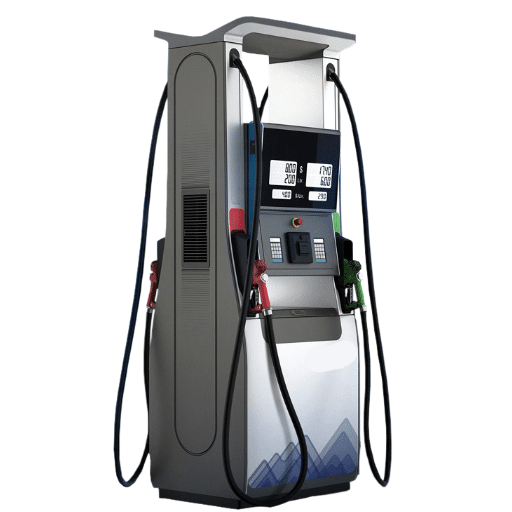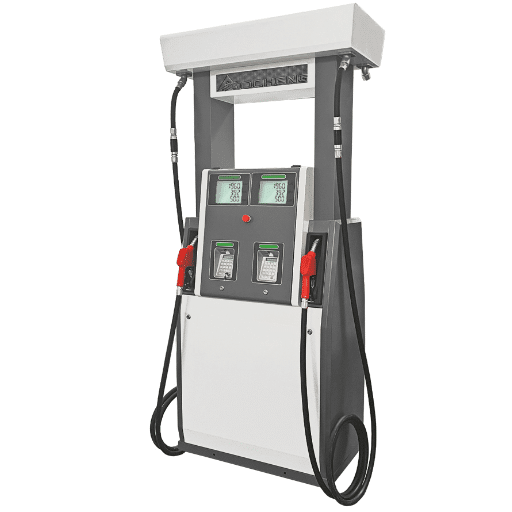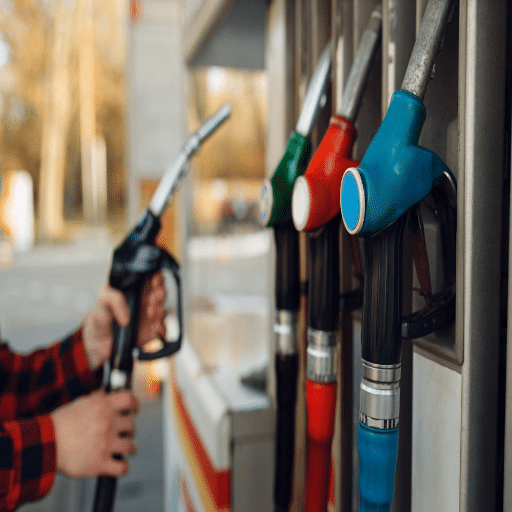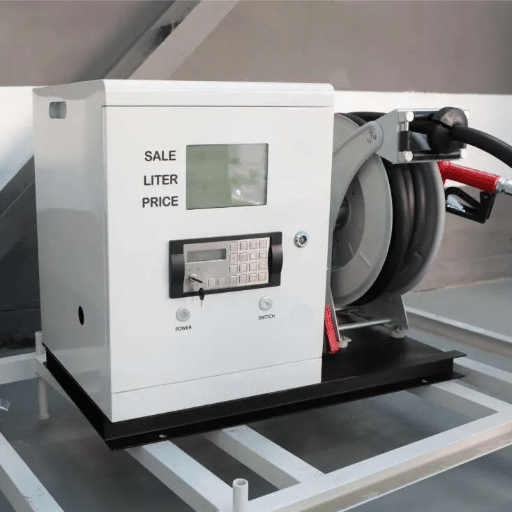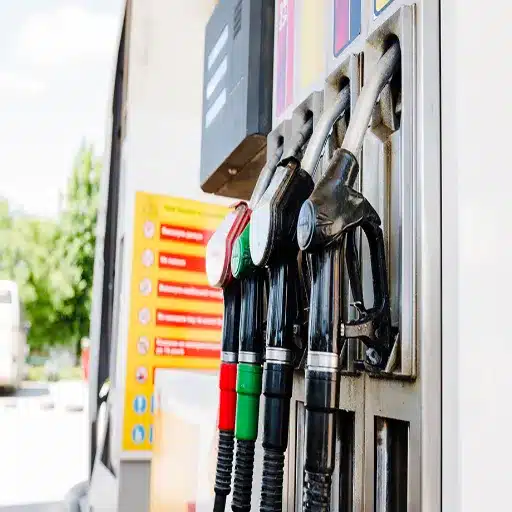Fuel dispensers are truly the heart of a gas station, working ceaselessly to serve its customers fast and efficiently. What if the dispenser showed signs of malfunctioning? Whether it’s slow pumping, inaccurate readings, or outright refusal to work, these problems must be resolved immediately to uphold customer satisfaction and operational efficiency. This guide takes you through the basic steps of testing and troubleshooting damaged fuel dispensers while equipping you with the know-how of diagnosing actual problems and proposing adequate methods of solving them. From common problems to testing strategies, we take you through everything that would keep your dispenser running as fine as new.
How to Diagnose a Bad Fuel Dispenser?
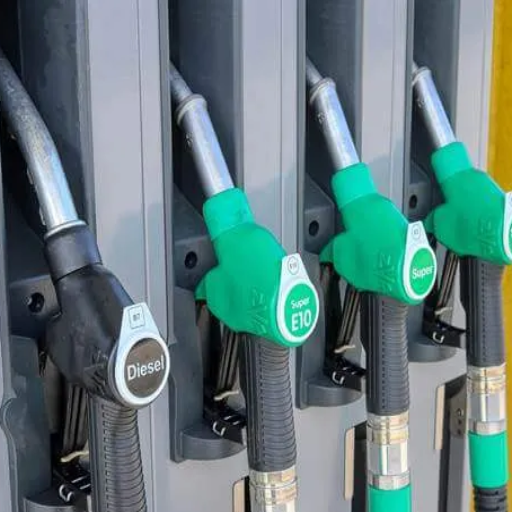
Check for Error Codes: Most modern fuel dispensers have built-in diagnostics and display error codes on the screen. Check your dispenser’s manual to check what the codes mean, and quickly isolate the problem.
Inspect the Nozzle and Hose: Check the nozzle and hose for any visible signs of damage, leaks, or obstructions. Defective nozzles or hoses can cause dispensers to malfunction.
Test the Flow Rate: Slow and irregular fuel flow may be caused by a clogged filter or a faulty pump. Checking flow times with a flow meter or dispensing times will tell you.
Check all Electrical Connections: Ensure all wires and connectors are firmly attached and not corroded. Electrical issues can cause malfunctions or disable the system altogether.
Evaluate the Pump and Motor: Listen for strange noises from the pump or motor. Grinding or humming noises are a sign of mechanical problems requiring immediate attention.
After working through these steps, you will know what is wrong and how to proceed. For complicated or unsolved problems, a technician with certified experience should be consulted.
What are the symptoms of a bad fuel dispenser?
Fuel dispensing may show signs of malfunction, including the following issues.
Irregular Fuel Flow: Fuel might be dispensed inconsistently, sometimes in spurts or random interruptions in flow.
Wrong Readings: These displays indicate the dispenser is incorrectly measuring how much fuel is being dispensed; hence, there is a problem with at least the sensors or further calibration.
Fuel Leakage: Unseen fuel leaks from around the nozzle or the hose could suggest seal failure or damage to the equipment.
Buttons or Display Not Responding: If buttons on the keypad or touchscreen don’t respond, or the display shows an error or doesn’t even light up, it might be an electrical or software problem.
Funny Noise: At the slightest hint of grinding, buzzing, or humming noise, mechanical trouble is most probably lurking inside internal components.
Whenever these symptoms appear, promptly prevent unsafe conditions and ensure accurate fuel dispensing. A regular maintenance schedule or even a call to a technician would help diagnose and fix these symptoms.
How can fuel dispenser efficiency and performance be tested?
Dispenser performance testing is invariably conducted through periodic checks followed by the appropriate calibration. Flow rate tests come first, determining the rate at which the fuel is discharged so that it may comply with accepted standards for such tests.
Subsequently, certified test measures ascertain the accuracy in the volumes dispensed by detecting any discrepancy between the displayed volume and the actual output volume.
They also inspect and clean filters, nozzles, and hoses to prevent clogging, which can hinder performance. They investigate and troubleshoot leaks, pressure drops, or pump anomalies in the system. Another software diagnosis can be run for the electronic portion to validate its functioning mechanism and the accuracy of transaction data. Therefore, keeping up with maintenance and observing the industry’s best guidelines ensures that everything operates at peak precision and conformity.
What tools do you need for fuel dispenser troubleshooting?
Fuel dispenser troubleshooting is highly effective when a broad toolkit comes into play. The basic equipment contains a digital multimeter to check electrical connections and components. We have the pressure gauge to check the fuel line pressure, and then there’s the special software package to perform the diagnostic analysis of the electronic systems. Other tools include adjustable wrenches, screwdrivers, and tubing cutters for mechanical inspection and repair. An infrared thermometer can be worthwhile for monitoring the temperature anomaly of pump components. A well-equipped toolbox ensures the correct diagnosis and proper fixing of the dispenser problems.
How Does a Fuel Dispenser Work?
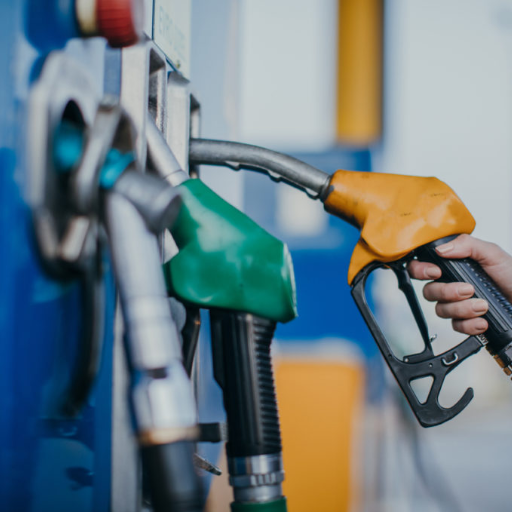
Another method of transferring fuel from an underground storage tank to vehicle tanks is by providing a fuel dispenser. The piping systems allow the fuel to flow through the dispenser once the hose is engaged and the pump is actuated. The dispenser uses a flow meter to measure the fuel precisely as it passes through the nozzle. Backup safety equipment, including automatic shut-off valves, prevents overfilling. Control and monitoring of the process allow for efficient fuel delivery and make it safe for delivery.
What is the role of the fuel dispenser in a vehicle?
The fuel dispenser in a car efficiently transfers fuel from an underground storage tank into the vehicle’s fuel tank while ensuring accurate measurement of the quantity of fuel delivered by the flow meter with an automatic shut-off valve on the delivery hose to shut off the flow and avoid spilling or overflow in case of overflow during the filling process. In addition, these dispensers might also be used in conjunction with computerized systems for payment, monitoring, and control of fuel flow to improve convenience and operating efficiency.
How does the fuel dispenser interact with the fuel tank?
The interaction between the fuel dispenser and a vehicle’s fuel tank is a carefully engineered process considering safety, efficiency, and precision. The fuel dispenser nozzle is inserted into the fuel tank’s inlet, the nozzle’s lever is pulled up, and suction is created inside the dispenser’s pump so that fuel can be drawn from the underground storage tank. Before measurement, the fuel is allowed to pass through a series of filters that remove dirt; following this, it enters a flow meter that measures the quantity of fuel delivered very precisely. Accuracy is guaranteed to be within ±0.3% or better in modern flow meters, so the amount of fuel dispensed is exact.
The nozzle contains an automatic shut-off system that operates utilizing the venturi sensor in most cases. This sensor senses when the fuel has reached the very top of the tank and then closes it immediately to prevent further overfilling or spilling. These mechanical systems are complemented with control electronics that indicate to the fuel dispenser about the vehicle’s fuel tank pressure system. Thus, data collected during refueling, for example, flow rate and tank pressure, allow the dispenser to adjust the flow to preclude vapor lock or excessive pressure buildup, compromising safety.
New technologies have facilitated the integration of vapor recovery systems, which collect fuel vapors generated during refueling and channel them back to the storage tank to limit environmental pollution. Furthermore, bright dispensers are outfitted with IoT-enabled systems that offer real-time feedback on optimizing fuel flow rates while adhering to safety standards. For instance, several advanced dispensers can fuel at 40 liters per minute for standard vehicles and 120 liters per minute on heavy-duty trucks, which are fluidly allocated to different tank capacities. This refined communication between the fuel dispenser and fuel tank exemplifies how mechanical accuracy interlaces with digital technology to afford a seamless refueling operation.
What are common fuel dispenser problems?
Despite considering reliability in their design, fuel distributors are impeded by a host of issues that compromise their functioning and the user experience. One of the primary concerns is that the fuel units are inaccurate in measurements, which may be caused by worn-out flow meters or calibration issues. These inaccuracies may imply monetary losses to either consumers or gas station operators. It has been quoted that a mere 0.3% miscalibration can amount to an enormous financial gap over time, especially in high-volume gas stations.
Another primary concern is loss of fuel flow speed, usually attributed to clogged filters or damaged pump components. Contaminants in the fuel supply mainly cause filter clogging, which decreases the dispenser’s efficiency and increases the user’s waiting time. The solution to this problem is to keep the dispenser well-maintained and fix or replace clogged filters on time.
Then comes broken-down payment systems. Nowadays, more and more dispensers are integrated with digital payment systems such as card readers and mobile payment options. A failure in these systems could cause delays and provoke customer dissatisfaction, perhaps even leading to business loss. Cybersecurity threats further proliferate, as outdated payment system software is vulnerable to an attack that could jeopardize customers’ financial data.
Lastly, dispenser leakages put the organization financially and environmentally in jeopardy. Fuel leakage wastes precious fuel and poses the risk of an accident or contamination of the surrounding area due to its flammability. Hence, such occurrences have to be avoided via particular measures such as identification via regular inspections and detection technology.
The general maintenance principle, components modernization, and enforcement of safety measures embody solutions that will adequately resolve these common issues and permit the smooth operation of fuel dispensers.
What are the Signs of a Gas Dispenser Leak?
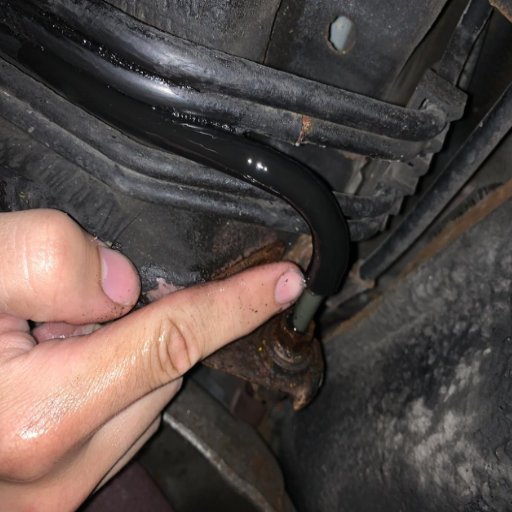
Leaks created in the gas dispenser pose a danger and have the power to destroy efficiency if not recognized early. Indicators of a leak would be if there are smells in the air around the dispenser, if liquids in the form of fuel can be seen pooling or staining on the ground near the equipment, or if someone files an abnormally high fuel consumption report. Or even pressure irregularities concerning the dispenser system, or the meter could malfunction, may all serve as indicators of a leak. Regularly inspecting the dispenser on these signs would make huge problems go away, ensuring a safer environment.
How can leakage in the fuel dispenser be identified?
Besides observing physical signs, more complex methods and technologies greatly help detect dispenser leaks. One such widespread technology is an electronic leak detection system. These systems, however, use sensors to continuously monitor dispenser components for any minor fluctuations in pressure or the presence of hydrocarbon vapors. Data from the trade indicate that modern leak detection techniques can detect leaks as little as 0.1 gallons per hour with a more than 95 percent precision.
Pressure testing is yet another method. For one, the dispenser system is sealed, and the pressure drop rate is measured over time intervals. A significant variation in pressure may suggest leakage. Also, automatic tank gauging systems detect and monitor fuel levels and reconcile any discrepancies, which could indicate a leak in the dispensers connected thereto.
Thermal imaging and infrared techniques are other recent techniques in Hydrocarbon leak detection. Temperature changes or heat signals around the dispenser are indicative. Load this with machine learning algorithms for predictive maintenance based on analysis of usage patterns to flag potential risks before leakages occur.
Lastly, regular maintenance and adherence to industry codes are pivotal. For instance, ASTM standards specify how fuel dispensers should be inspected regularly and maintained to minimize risks associated with uncovering leaks. In tandem, such technological and procedural measures assure safety and safeguard the environment from fuel-associated hazards.
What causes fuel dispenser leaks, and how can they be prevented?
Fuel dispenser leaks are a myriad of disasters occurring for many reasons, commonly wear and tear, neglect, or mechanical failure. Seal and gasket deterioration over time is one reason that keeps fuel from escaping the dispenser system. Besides, corrosion of internal components also brings about dispenser failures, especially if it takes place in areas with high humidity or those without protection against aggressive chemicals. Another mechanical reason would be cracked piping or damage to one’s nozzle, thus resulting in leaks along the dispenser-hose apparatus.
From the prevention standpoint, a fuel dispenser leak needs proactive treatment from several angles. Arranged regular maintenance of inspections for cracks, corrosion, or worn seals must be assured. Such sensors as automatic leak detectors are now in use that should inform the operator as soon as any anomaly arises, thus preventing the detected leakage. According to industry surveys, businesses with an automated leak detection system monitor up to 80% of potential leaks before substantial fuel loss or environmental contamination occurs. Higher-quality corrosion-resistant materials, whenever used during installation or upgrades, also tend to provide a better service life to fuel dispensers, minimizing the chance of leakage. Personnel need to receive adequate training both on how to operate dispensers and on spotting early warning signs. Combining sound maintenance with state-of-the-art technology and proper materials will create a win-win situation in reducing leak risks for fuel dispensers, protecting both assets and the environment.
How to Test a Fuel Dispenser in Your Vehicle?
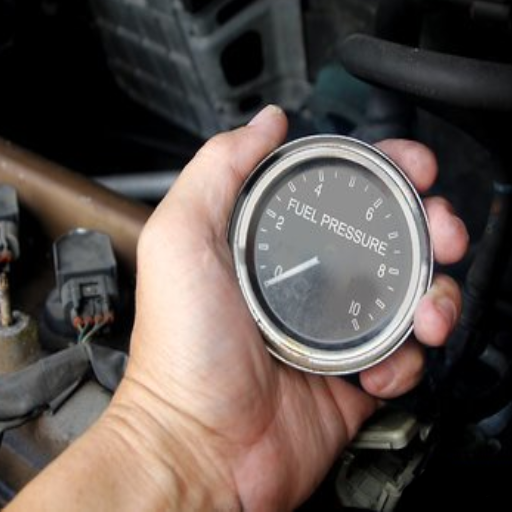
Testing a fuel dispenser on the vehicle should involve the following steps:
Check for Visible Damage on Nozzle and Hose: Be sure to check for any visible damage or leaks in the nozzle. The hose must be attached properly and without any cracks or kinks.
Observe the Display: Look for the pump’s digital display, which should reset to zero before starting. This will help you keep track of the quantity of free being dispensed.
Check the Rate: While doing so, check the fuel dispensing rate. Any seeming slow rate or inconsistency may be a problem for the dispenser.
Test for Quality: Note any unusual engine behavior post-refueling or check the quality of the fuel, if necessary, to ensure that it meets acceptable standards.
These easy checks will ensure that the dispenser operates well and dispenses fuel safely and satisfactorily.
How do you use a fuel dispenser gauge for accurate measurement?
Using a fuel dispenser gauge correctly helps you avoid guesswork and dollar leaks. Follow these simple steps, and the pump should behave as you expect nearly every time. Nothing fancy, just practical.
Start with Calibration: First, the gauge must be calibrated. If nobody has tweaked it in a while, yesterday’s reading could easily be off by a pint or two. Most shops set a monthly reminder to check calibration, and it’s a good habit.
Inspect the Gauge: Now, give the screen the once-over. Cracks, fog, or a dial that sticks halfway around spoil the fun fast. Even a stubborn digital readout flashing EEE is a clue you should back away before someone fills a tank that isn’t empty.
Ensure Correct Setup: Slide the nozzle right into the tank spout-no half measures, no leaning. After that, glance at the flow rate setting; heavy diesel nozzles can blast fuel like a garden hose on steroids. If the flow starts and stops, the gauge panics, and the displayed number jumps.
Monitor Temperature Compensation: Petrol and diesel swell and shrink depending on how warm or cold they are. Good news: most modern dispensers already eyeball the temperature and fake it back to a standard 15C—that’s 59F if you still measure in socks. Just check that the auto temp button is lit; if not, switch it on and let the electronics do their job.
Zero the Gauge Before Use: Before you fill a single tank, press the reset button and watch the needle drop to zero. Starting fresh clears out any leftover numbers from the last user and lets you track every drop.
Coordinate with Flow Rate: Keep the pump handle steady once you squeeze the trigger. Yanking it back and forth messes with the readout, and researchers keep saying that a slow, even stream gives more accurate figures.
Verify Total Volume Dispensed: When the auto-stop kicks in, glance at the dial and jot that figure down. Many modern pumps log the amount electronically, so you can double-check the screen against your notes if something looks off.
Conduct Routine Maintenance: Pop the filter out, wipe the seals, and grease moving bits every few weeks. Fuel yard crews usually pencil that into their checklist, and skipping it is a quick road to faulty readings.
Accurate fuel dispensing and gauge measurements matter: Mistakes waste money, and regulators notice the mess first. Stick to these habits, lean on the tech built into the pump, and you’ll keep the numbers honest for everyone from the driver to the compliance officer.
What should you do if the fuel dispenser is below specifications?
I would stop filling fares for customers if I found the dispenser below specs, as more inaccuracies could follow; then, I would report the problem for calibration and repair by the technical people or maintenance team. It is also essential to document the issue and follow any regulatory guidelines for compliance and trust with the customer.
What are the steps to check for a bad fuel dispenser?
Inspect for Visual Damage: Give the dispenser a quick once-over. Look for leaks, wobbly hoses, and nozzles that might break off in your hand. A cracked housing or a drip that never quite stops usually means something inside is already messed up.
Monitor the Flow Rate: Watch how fast the fuel comes out. Grab a stopwatch, or even your phone, and count how many gallons pour into a bucket in one minute. Most pumps aim for 5 to 10 gallons per minute; anything seriously below that will feel more like waiting for molasses.
Verify Calibration Accuracy: Test the pump against a known standard. Use a certified 5-gallon can and see if the meter matches what you just poured. Regulation books let the two figures drift by only ±0.3%; once the difference slides past that mark, the pump needs a thinker, not a tinkerer.
Check the Metering Components: Peek inside the meter and the pulsar. Worn gears or sticky valves can turn honest gallons into phantom fuel, and no one wants to pay for air. If you see scratches or hear odd clicks while fueling, the guts already tell you they quit.
Test for Air Leaks: Air sneaking into the fuel line can affect the amount of product from the nozzle. A quick pressure or vacuum test can spot those tiny gaps and blockages before customers notice the pump is short-changing them.
Inspect Filters and Fuel Quality: Grimy filters act like clogged straws and slow the flow, messing up speed and accuracy at the counter. Swap in fresh media on schedule, and check for water or grit in the tank; that funky stuff hints at bigger trouble buried deeper in the supply chain.
Review Software and Display Functionality: The readout, whether flashing numbers or old-school mechanical dials, has to line up with reality, or the receipt will show a wrong total. Glitches in the software, or even a loose wire, can flip the price or volume the instant a sale starts.
Following these simple checks keeps pumps honest, speeds up service, and makes sure drivers leave with exactly what they paid for. Happy customers usually turn into returning ones, which is good for business in any weather.
When Should You Replace Your Fuel Dispenser?
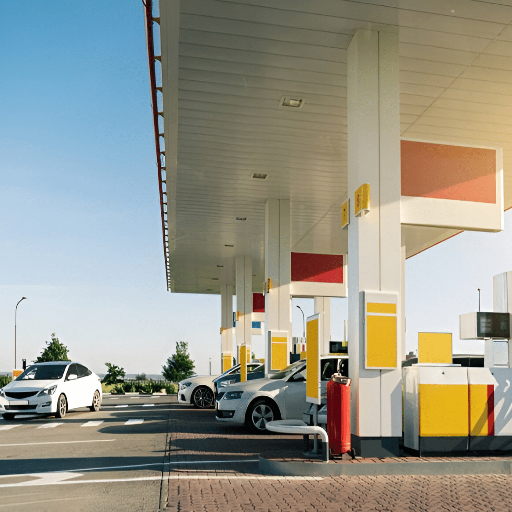
If it is regularly faulty, cannot pass inspections, or has ceased to meet current safety or efficiency standards, the fuel dispenser must be replaced. Some other signs could be frequent breakdowns, outdated software, inaccurate readings, or even visible wear and tear that affects its functioning. Another good reason to upgrade your dispenser is to take advantage of new technologies, such as better payment systems or improvements in fuel efficiency; it makes a difference in compliance and customer experience. Inspections are usually carried out, and they may be able to pinpoint when the need for replacement pops up.
What are the costs associated with fuel dispenser replacement?
The costs associated with fuel dispenser replacement depend on many factors, such as the kind of dispenser, its features, the brand, installation requirements, and extra upgrades. Placing an average estimate on a fuel dispenser puts its price between $15,000 and $40,000 for a single unit. Installation costs, such as plumbing, electrical wiring, and site preparation, add a few thousand dollars to the bill. Any extra features, such as an advanced payment system or green options, will go toward raising costs. Another factor to consider is whether the service contract for maintenance or software upgrades would be included in the long-term budget for these installations to be functional and compliant.
How do you determine if your fuel dispenser needs to be replaced?
There are several crucial points to consider while examining the possibility of a fuel dispenser replacement. First, thoroughly observe frequent breakdowns or costly repairs. If the maintenance charges are steadily increasing, consider this dispenser nearing the end of its life cycle. The second is to weigh the efficiency given the current standards and regulations. Older models may not fit in with the present-day standards or support advanced fuel categories; this affects their performance and legal registration. Consider the reliability of the technology to have an answer to this question. If the dispenser does not provide features such as advanced payment technology or parameter monitoring via remote location, modernization would give real benefits relative to efficiency, reduced downtime, and customer experience. The indicators will serve to signal when the time has come to replace.
How can a fuel dispenser be maintained to extend its lifespan?
By proper maintenance, dealers can increase the lifespan of their fuel dispensers and ensure their long-term reliability and optimal performance. They could be vigilant in inspections, including scrutiny of the hose, nozzle, and filter conditions for wear and tear. For instance, fuel filters should be changed regularly to avoid clogging and maintain a smooth fuel flow, since fuel impurities may damage the equipment over time. The grease and dirt deposits on the dispenser and display panels should be regularly cleaned to prevent functional impairment and damage to sensitive electronics. Also, the dispenser should be calibrated periodically to ensure proper dispensing and adherence to regulatory standards, thereby garnering customer trust.
In addition to maintenance activities, a technology upgrade will spell longer life for fuel dispensers. Using high-grade parts, which might include corrosion-resistant material or better sealing mechanisms, will help prevent damage from moisture and temperature fluctuations in ambient conditions. Furthermore, installing advanced systems such as automatic leak detection and remote monitoring may provide early warning to operational personnel, potentially avoiding costly repairs and downtimes. Lessening the number of unforeseen failures and greatly enhancing the equipment’s durability are attained through compliance with a thorough maintenance schedule as promulgated by the manufacturers.
Reference Sources
Fuel Subsidy Corruption and Economic Reconstruction in Nigeria
Automatic Vehicle Fueling System using PLC Controlled Robotic Arm
IoT-Based Detection of Molded Bread and Expiry Prediction using Machine Learning Techniques
Frequently Asked Questions (FAQs)
Q: How can I test if a gas station fuel pump is damaged?
A: To test if a fuel pump is damaged, first listen for a whine emanating from the fuel dispenser’s pump when someone turns the ignition. If there is no sound, the fuel pump may be bad. You can also use a fuel pressure gauge to measure the fuel pressure accurately. If the pressure is below the factory specifications, you may need to replace the fuel pump.
Q: What are the signs of a failing fuel pump?
A: Common signs of a failing fuel pump include difficulty starting the car, a whining noise from the back seat area, loss of power under stress, and the car’s fuel gauge behaving erratically. If your car won’t start or is hard to crank, the fuel pump may be bad.
Q: How do I use a fuel pressure gauge to test a fuel pump?
A: Attach the fuel pressure gauge to the test port on the fuel rail. Turn the ignition to the “on” position without starting the engine. The indicator should show a reading that matches the car’s recommended fuel pressure range. If it doesn’t, the fuel pump or pressure regulator may fail.
Q: Can a bad fuel pump affect my car’s ignition?
A: A bad fuel pump can affect the car’s ignition by not supplying enough fuel pressure, making it difficult for the engine to start. If the pump is bad, the vehicle might crank without starting because the fuel needed for ignition is insufficient.
Q: What should I do if I suspect my fuel pump is bad?
A: If you suspect your fuel pump is bad, conduct a pressure test using a fuel pressure gauge. If the results are not within the specifications, consider consulting a mechanic to inspect the fuel system further. You may need to replace the pump or other components, like the fuel filter or pressure regulator.
Q: How can a jumper wire help in testing a fuel pump?
A: A jumper wire can bypass the relay to power the fuel pump directly. You can determine if the pump runs by connecting the jumper wire to the correct terminals in the relay socket. If it does, the issue might be with the relay or circuit, not the pump.
Q: Is it necessary to remove the fuel tank to test the fuel pump?
A: Removing the fuel tank to test the pump is not always necessary. Many cars have access panels under the back seat or trunk that allow you to reach the pump without dropping the tank. However, you may have to remove the tank if you need to replace the pump.
Q: Why does my car’s fuel pump make noise?
A: A noisy fuel pump can indicate a failing or a struggle to maintain pressure. A whine or loud hum from the fuel tank area could suggest the pump is bad or that there may be an issue with the mounting bracket or fuel pressure.
Q: How reliable are inline fuel pumps for testing purposes?
A: Inline fuel pumps can be a reliable way to test the fuel system, as they can accurately assess pressure and flow. Mechanics often use them for diagnostics and can help determine if the primary pump is functioning correctly.

